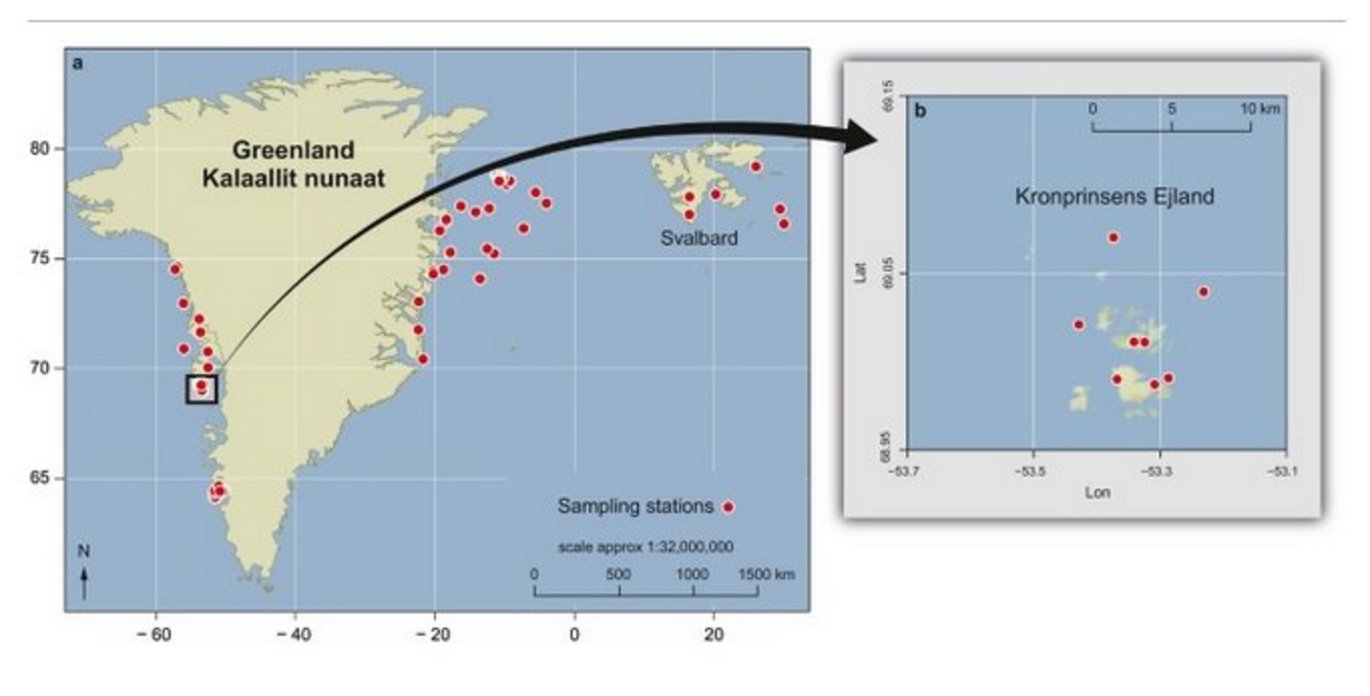Prevalent fingerprint of marine macroalgae in arctic surface sediments
New publication by Ørberg SB, Quesada CMD, Geraldi N, Sejr MK, Wegeberg S, Hansen JLS et al.

Abstract:
Macroalgal forests export much of their production, partly supporting food webs and carbon stocks beyond their habitat, but evidence of their contribution in sediment carbon stocks is poor. We test the hypothesis that macroalgae contribute to carbon stocks in arctic marine sediments. We used environmental DNA (eDNA) fingerprinting on a large-scale set of surface sediment samples from Greenland and Svalbard. We evaluated eDNA results by comparing with traditional survey and tracer methods. The eDNA-based survey identified macroalgae in 94 % of the sediment samples covering shallow nearshore areas to 1460 m depth and 350 km offshore, with highest sequence abundance nearshore and with dominance of brown macroalgae. Overall, the eDNA results reflected the potential source communities of macroalgae and eelgrass assessed by traditional surveys, with the most abundant orders being common among different methods. A stable isotope analysis showed a considerable contribution from macroalgae in sediments although with high uncertainty, highlighting eDNA as a great improvement and supplement for documenting macroalgae as a contributor to sediment carbon stocks. Conclusively, we provide evidence for a prevalent contribution of macroalgal forests in arctic surface sediments, nearshore as well as offshore, identifying brown algae as main contributors.
